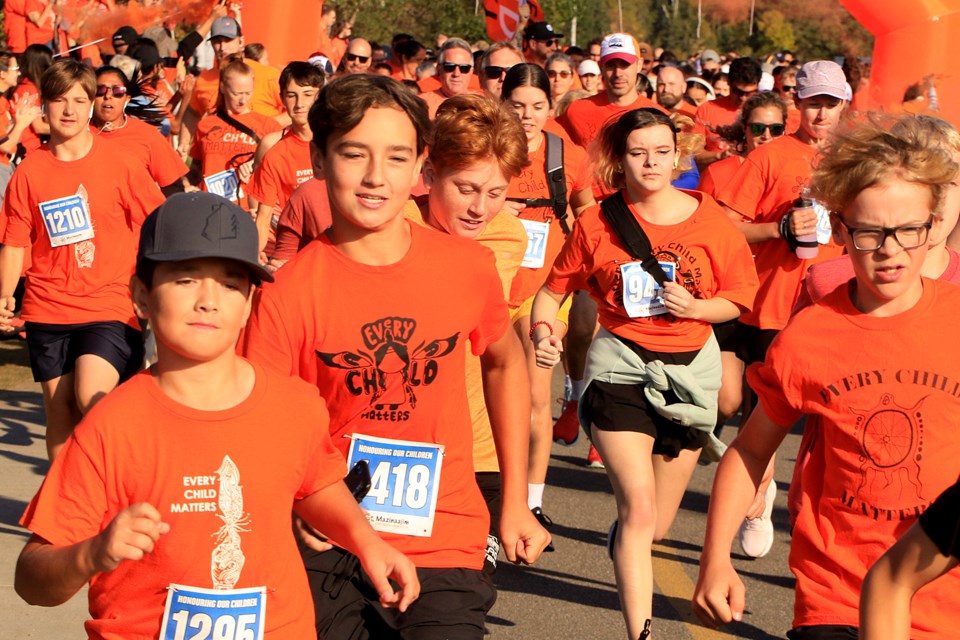THUNDER BAY – The strength and resilience of Indigenous People were on full display on Monday morning, as more than 900 people took part in the third annual Honouring Our Children Reconciliation Run.
Anika Guthrie, the vice-president of the board for the Mazinaajim Children’s Foundation, said it’s also a chance to reflect an honour the lives of children that were taken and the lives lost during the still painful residential school era.
“We’re doing that in a way that we’re moving and healing together,” Guthrie said.
Seeing so many people on hand is a remarkable feeling she added, knowing the message of reconciliation is reaching so many people.
“That’s what it’s all about. It’s about honouring the strength of Indigenous People, learning about Indigenous culture through the sacred fire, the jingle dress, the drum, but having all people do that. That’s that intercultural understanding pieces that is so important in the call to action. We’re really seeing that in action here,” Guthrie said.
It’s estimated more than 150,000 First Nations, Inuit and Metis children, between the ages of four and 16, attended residential schools in Canada, between the 1870s and the 1990s, the last school not closing until 1996.
Children were forcibly taken from their homes and, in many cases, had their culture and heritage stripped from them, made to assimilate to Western culture and religion.
Having school groups on hand is especially important, Guthrie said.
“It’s all about them, so it’s so important to see children and youth here honouring the spirit of children and youth, but also recognizing that’s why we’re here, especially for Anishnawbe people. What we do is for seven generations after us, so we want to see the children engaged in what’s happening and changing the future of this nation.”
Also on hand for Monday’s event were Indigenous Services Minister Patty Hajdu and federal NDP Leader Jagmeet Singh.
Hajdu said National Truth and Reconciliation Day was created in order to give time and space to reflect on the true history of Canada and the impact it’s had on Indigenous children and youth and their families. But not only that, the country’s culture as a whole.
“There’s a lot of grief associated with a day like today, but there’s also a promise and a hopefulness of healing,” Hajdu said, noting it was fantastic to see such a huge crowd on hand.
“What it means to me is Canadians are waking up to the history of their country, in many ways that they have not known before. I think back to when I was a young student in elementary or in high school, and the knowledge of what happened to Indigenous People in this country, that wasn’t well documented or even taught at all. For many Canadians, it’s not that they didn’t want to know. They didn’t have the opportunity or teaching to learn what actually happened to First Nations and Indigenous Peoples.”
Singh called it one of the most important days for Canadians.
“It’s a day when we really take a moment and reflect on the fact that the first people of this land have been faced with historic and ongoing injustice. Today’s really a day for us to say, ‘What are we going to do about it.’
Several other events are taking place throughout the city, including a pow wow on Mount McKay and a sacred fire at the Ontario Native Women’s Association.
